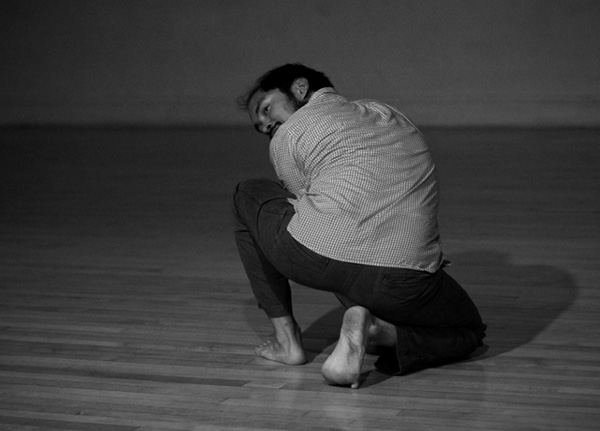
TROUPE
first performed on
September 23, 2011
Links Hall, Chicago, IL
performed three times in 2011
JUSTIN CABRILLOS
Chicago, IL
665470240c665470240a665470240b665470240r665470240i665470240l665470240l665470240o665470240s665470240@665470240g665470240m665470240a665470240i665470240l665470240.665470240c665470240o665470240m
justincabrillos.com
TROUPE
JUSTIN CABRILLOS
In “Troupe,” I concentrated on the relationship between American showman P.T. Barnum and the various acts (creatures and people) of his circus. Toward this end, I looked at how his words shaped public perception of them. In the piece, I pushed the dynamic relationship between verbal and bodily languages by choreographing them independently. I wondered how Barnum’s words shaped these animals’ and people’s perceptions of themselves.
I came to understand this piece as an exploration of power relationships based on who and how one is able to integrate text, voice, and movement. My guiding questions were: in Barnum’s shows, who is doing the speaking? For whom, and for what purpose? In a sense, I learned that the creatures and humans of Barnum’s world did not have the chance to speak, vocalize, and move on their own behalf. However, I did not try to speak for them because I would be doing the same thing that Barnum had done. Fragmentation became a working method for resisting a privileged position of speaking.
The piece reconstructed language of text, voice, and movement based on the dynamics of the relationship between Barnum and the acts in his shows. Barnum was their voice in the media and their choreographer in hundreds of sold out shows. He spoke for them. He positioned and moved them. It was this speaking and choreography that framed the audience’s perception of them. This understanding of language as a frame helped me structure the various announcements that introduced different movement portraits. The piece became a perverse musical, among other things. I consciously pulled from the conventions of various genres. The mixture of genres was appropriate in Barnum’s world because he popularized various forms of entertainment-not just the circus, but the public museum and the musical concert. He also produced temperance lectures (a sort of morality play about the dangers of alcoholism) in part to change the public’s negative attitude toward theater. I constructed a movement interpretation of one of his most famous morality plays, “The Drunkard.” Rather than trying to play Barnum, per se, I focused on his position of power in relation to the innocents-the animals and people of his world-because in representations of him, his persona often overshadows them. This process led me to reconstruct the fragmented voices in Barnum’s world without reducing their multiplicity.